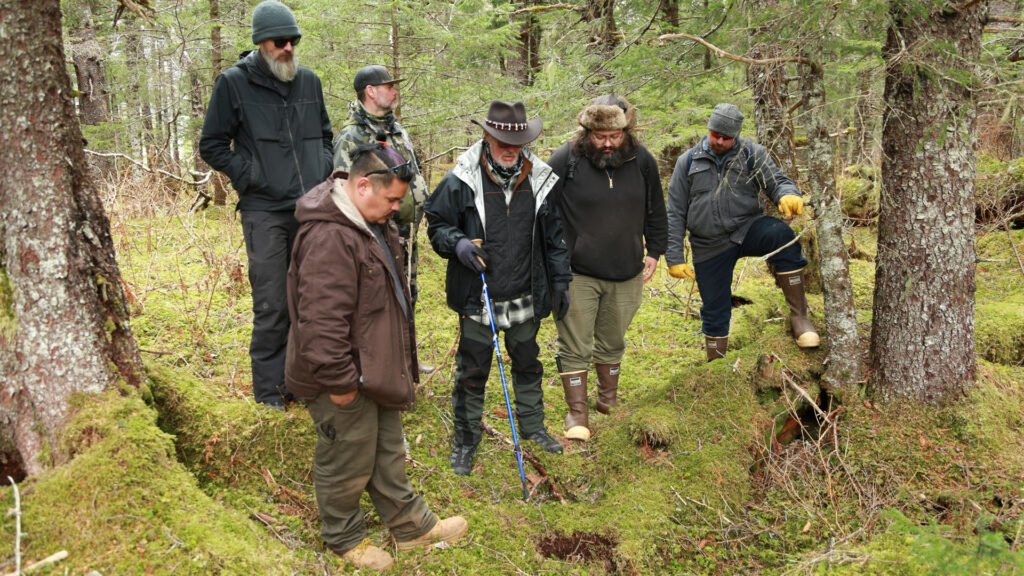Nestled in the remote reaches of the Kenai Peninsula, Portlock Alaska—also referred to historically as Port Chatham—emerges not only as a ghost town but as a centerpiece of one of the most enduring and chilling legends in Alaskan history. Originally established as a cannery town in the early 20th century, Portlock was once a modest yet functioning settlement, relying primarily on the fishing industry and natural resource extraction. The town drew workers from the surrounding regions, including Native Alaskans and Russian immigrants, all eager to carve a life out of the rugged wilderness.
Portlock was strategically located to benefit from the rich fisheries and dense forests of the area, and for a time, it thrived. Yet, despite its practical advantages and early promise, something strange began to unfold within the shadows of this coastal town—something so unsettling that it led to its total abandonment.
Unexplained Events Begin to Surface
Stories of eerie disappearances, mutilated bodies, and mysterious creatures began circulating among the residents. Fishermen reportedly went missing without a trace, and hunters would venture into the forest never to return. According to the Native Alutiiq people, the region had always been associated with danger. Elders warned of malevolent entities that roamed the mountains and woods, and Portlock seemed to have become their unwilling home.
By the 1940s, things had taken a sinister turn. Reports began to surface about large, human-like footprints found in the snow and mud, far too large to belong to any person known in the area. There were claims of strange howls echoing through the night and chilling encounters with an unseen entity that seemed to stalk the town’s outskirts. The most terrifying element was not just the disappearances, but the state in which some of the bodies were found—brutally torn apart, mangled beyond recognition, and in locations that defied logical explanation.
The Legend of the Nantinaq
Central to the mystery of Portlock is the legend of the Nantinaq, a creature rooted in Native folklore. Described as a large, bipedal beast with characteristics similar to the Sasquatch or Bigfoot, the Nantinaq is said to possess both immense strength and a strong territorial instinct. Unlike the commonly benign image of Bigfoot in pop culture, the Nantinaq is portrayed as dangerous and hostile.
Residents of Portlock came to believe that the Nantinaq was responsible for the disappearances and deaths. As fear gripped the community, the sense of dread became overpowering. Hunters and lumber workers refused to enter the forest alone, and even groups would proceed with extreme caution. Despite the absence of concrete proof, the sheer consistency and intensity of the reports began to weigh heavily on the population.

The Mass Exodus
By 1950, the fear had grown so intense that residents made the extraordinary decision to leave Portlock entirely. The town was not abandoned due to economic collapse or natural disaster, as is often the case with remote settlements. Rather, it was fear—deep, primal fear—that drove people away. The cannery shut down, homes were left behind, and Portlock faded into obscurity almost overnight.
Only a handful of residents remained for a short time, but even they eventually gave up, leaving the town completely deserted. What was once a growing settlement had turned into a ghost town, its buildings slowly succumbing to the ravages of time and weather. The woods reclaimed the streets, and the harbor went quiet.
Modern Investigations and Renewed Interest
In recent years, interest in Portlock has seen a resurgence, driven by paranormal investigators, documentary filmmakers, and adventurers seeking to uncover the truth behind its dark past. Shows such as “Alaskan Killer Bigfoot” have explored the legend of Nantinaq, retracing the steps of those who once lived there and searching for clues in the overgrown remains of the town.
Some researchers have proposed that the events may have had natural explanations—bears mistaken for monsters, accidents misinterpreted as attacks, or even tensions within the community boiling over into violence. However, these theories fail to explain the uniformity and persistence of the supernatural claims, nor do they account for why so many people abandoned their homes without a more tangible reason.
Others believe that the area could be home to an undiscovered species or that the stories reflect a cultural memory passed down through generations, perhaps based on real but now forgotten threats. The landscape of Portlock—dense forests, hidden caves, and steep mountains—certainly provides the kind of environment where both real and imagined dangers could thrive.
Cultural Impact and the Power of Myth
The story of Portlock is more than just a mystery or a case study in unexplained phenomena; it is also a powerful reflection of the relationship between humans and the wild. Alaska, with its vast uncharted lands and harsh climates, naturally breeds stories of survival, fear, and the unknown. Portlock’s legacy taps into a universal fear of isolation and the unseen dangers that may lurk beyond the firelight.
In many ways, Portlock represents the collision of folklore and frontier reality. Whether the events were caused by a real creature, a misunderstood series of tragedies, or a collective psychological response to a harsh environment, the legend continues to live on. It is taught as a cautionary tale and celebrated in Alaskan lore, its haunted status attracting thrill-seekers and storytellers alike.
Portlock Today: Ghost Town or Gateway to the Unknown?
Today, Portlock remains largely inaccessible, hidden among the trees and cliffs of the Kenai Peninsula. Weathered buildings still stand as silent witnesses to the unexplained exodus, and the air carries a feeling of abandonment. Those who visit often describe a palpable sense of unease, as if the land itself remembers what happened and is reluctant to share its secrets.
Despite the many attempts to explain the mystery, Portlock remains unsolved. It continues to attract those who seek answers and those drawn by the allure of the unknown. Whether the truth lies in folklore, undiscovered wildlife, or psychological fear, one thing is certain: Portlock, Alaska, will forever occupy a chilling chapter in the legends of the Last Frontier.

